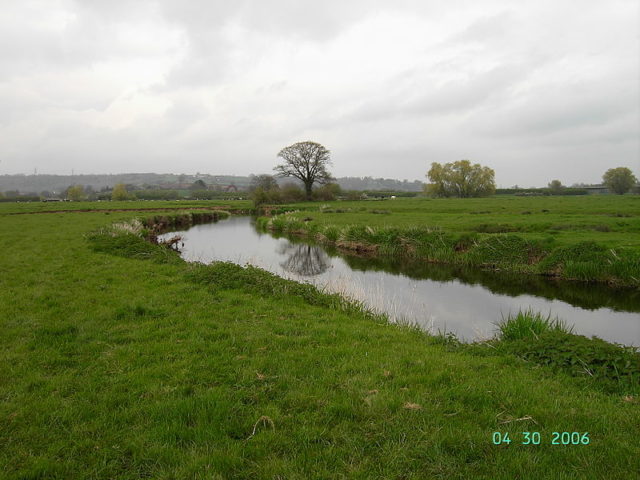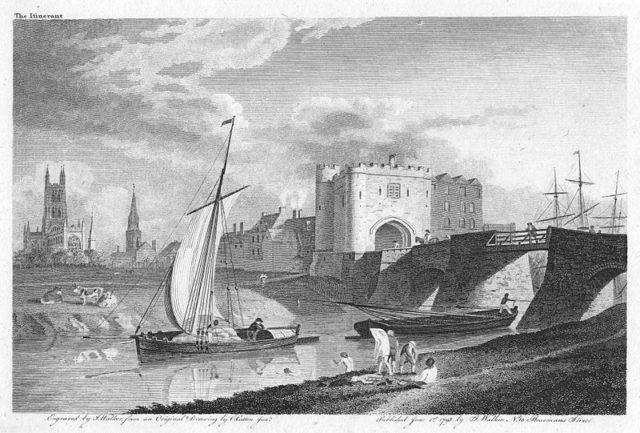At times, the Axe River in southern Devon, England has water levels low enough to reveal medieval treasures. A large part of the skeleton of a merchant ship can be seen protruding from the mud and water.
With the original name lost to time, archaeologists had dubbed this wreck the Axe Boat. The centuries-old fishing boat was discovered in 2001 on the west side of the river.
By measuring and observing the way the ship was constructed, researchers have been able to determine it was active sometime between 1400 and about 1650. At the time, the area was a major seaport supporting close to 20 percent of England’s imports and exports.

The English winter storms of 2014 have also helped uncover significant shipwrecks. A larger skeleton stands in the sand of Northam Burrows Country Park near the town of Westward Ho! has been revealed as the 16th-century cargo ship Sally.
Not to be confused with the slave ship Charming Sally, this Sally was delivering port wine from Orporto, Portugal to Bristol when it ran aground in 1769. The 75 ft. long wreck stands in a more public area and has been more exposed than the Axe ship, allowing archeologists better access in which to study the ship’s remains.
A third shipwreck a few hundred yards from the Sally is believed to be a Severn Trow. These flat-bottomed sailing ships traded along the southwest coast of England 200 years ago. From the angle of the wreckage, archeologists believe it was beached due to a storm.

Fortunately, Historic England, a public body of the British government responsible for protecting historical sites in Great Britain, has given these three wrecks protection in order to legally keep the public from harming these relics from the past. Historic England has also been charged with protecting places such as Stonehenge, Hadrian’s Wall and Dover Castle.
Mark Dunkley, a maritime archeologist working with Historic England stated, “We identified these three important wreck sites during a survey of Devon’s coastal shipwreck heritage. Despite the effects of environmental decay and the passage of time, substantial portions of their lower hulls survive, allowing us to determine what type of vessels they were and the role they played in Devon’s coastal economy.
The fact that they’re often visible to the public gives them a whole added significance as it’s quite rare that such old maritime fabric can be seen by anyone who isn’t a diver.”
Bill Horner, an archaeologist at Devon County Council remarked, “It’s great that Devon’s maritime past is being recognized by the protection of these wrecks and we look forward to working with Historic England to understand these sites further.”
Although the Sally and Severn Trow are protected, they are easily accessed by the public from dry land when the tides are right and visitors are welcome to observe and photograph them as long as they do no harm.
Historic England believes there could possibly be thousands of shipwrecks in the area just waiting to be discovered, and are asking the public to keep a watchful eye when they are exploring the coast. Historical expert Joe Flatman has said, “I think it’s almost inevitable that we will find more in the coming years. There are around 40,000 recorded shipwrecks, but only a few have ever been found.
And the coastline is changing all the time, so they could suddenly appear. Some appear and then vanish so people can check records and find out where they were seen and keep looking to see if they reappear. People who are regular walkers along the coast or who have dogs should look out for them and let us or local historians know if they spot one. The protection we have given to the three wrecks is in recognition of how wonderful and significant they are and we encourage people to go down and see them.”
